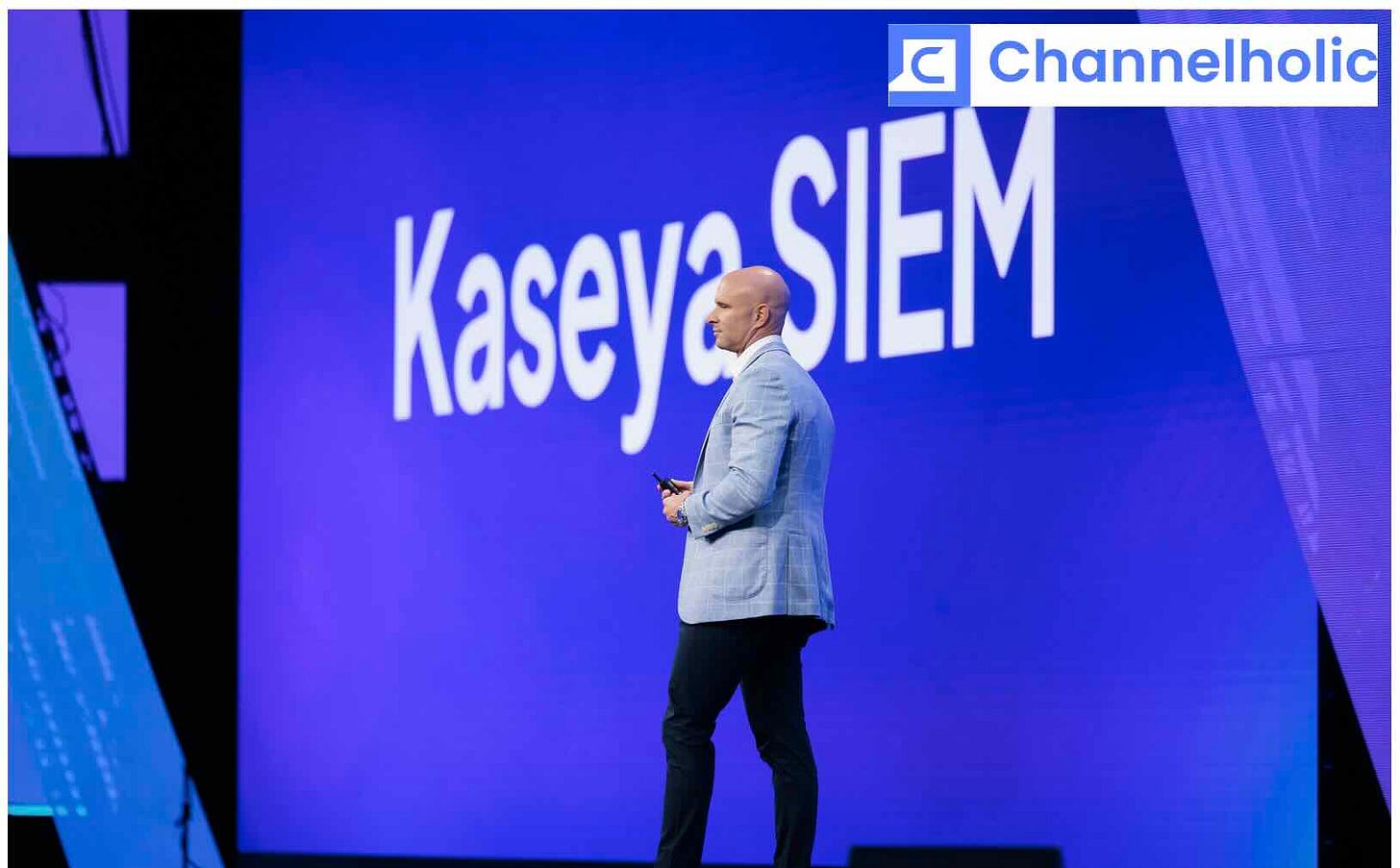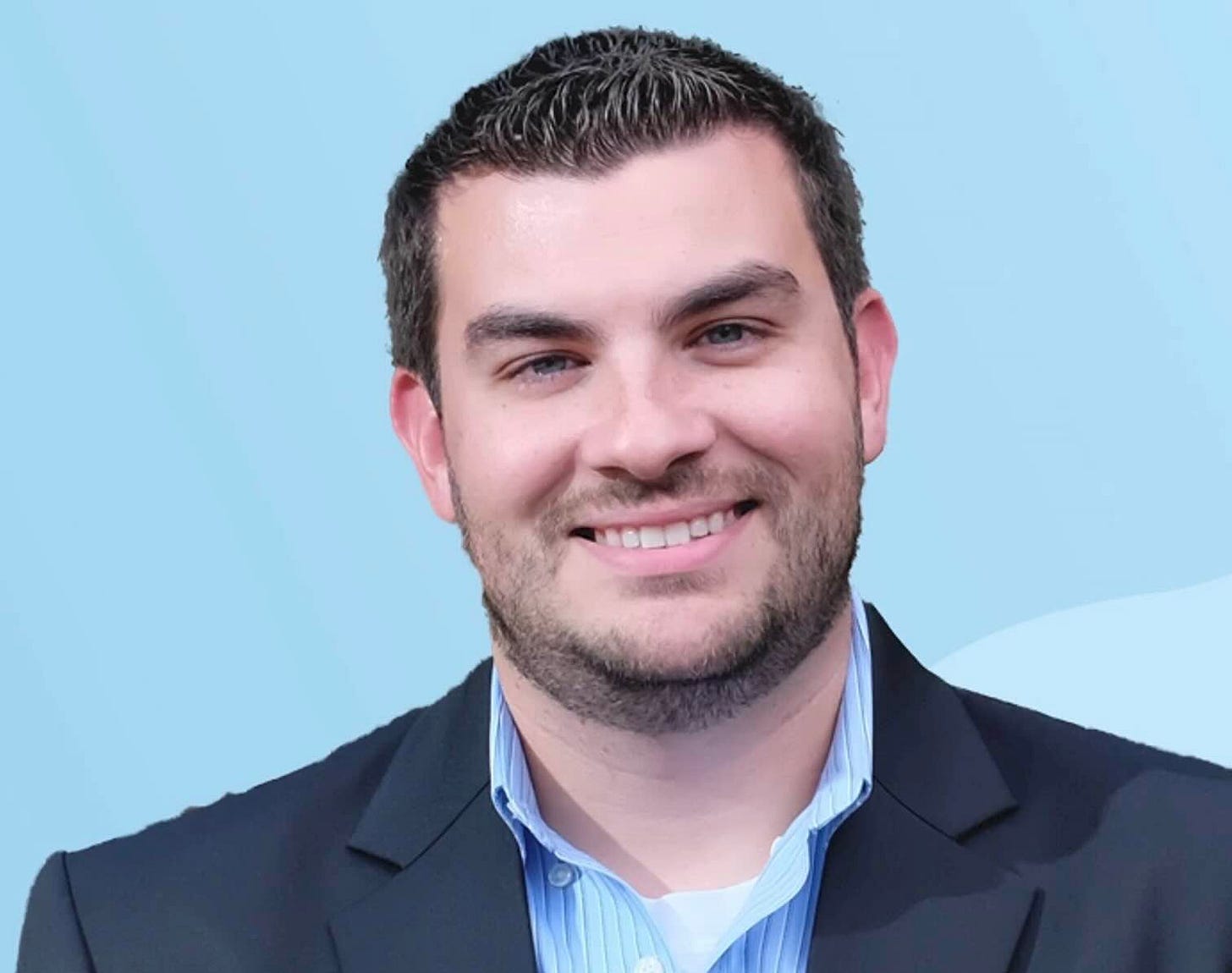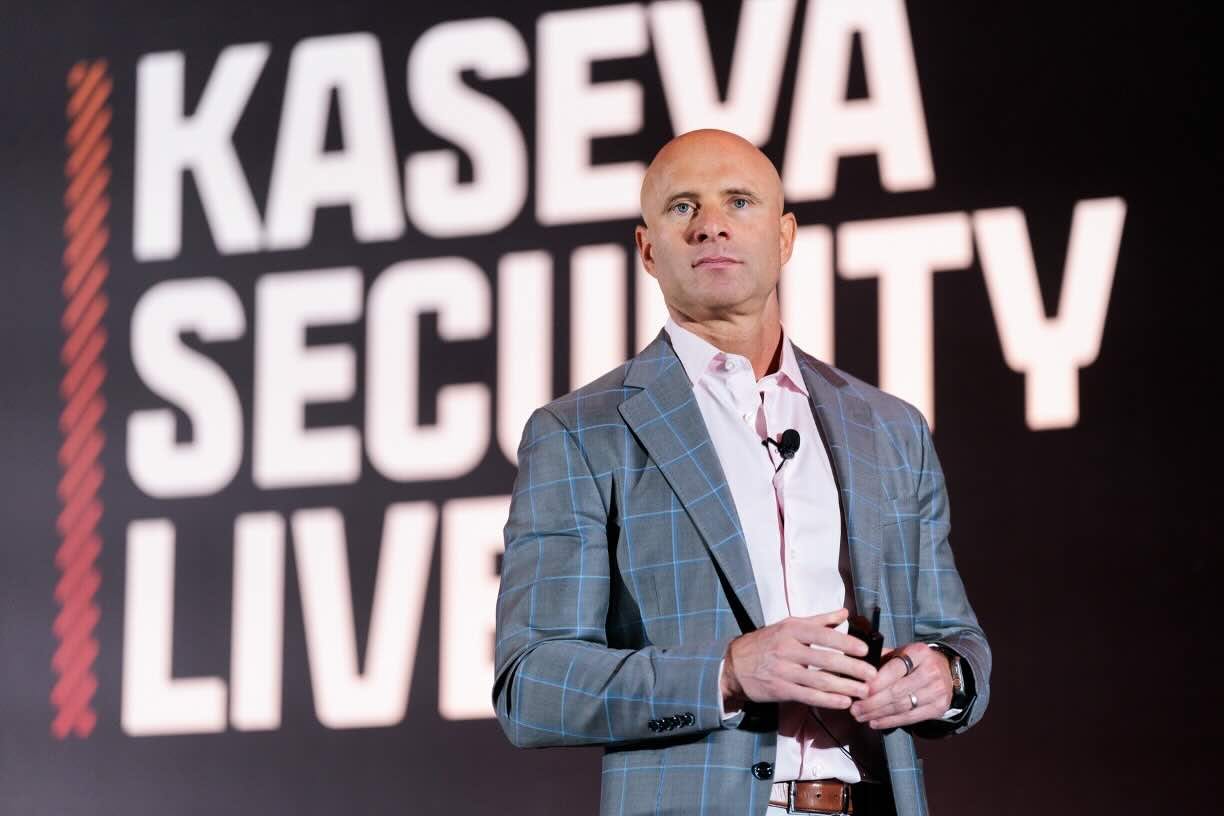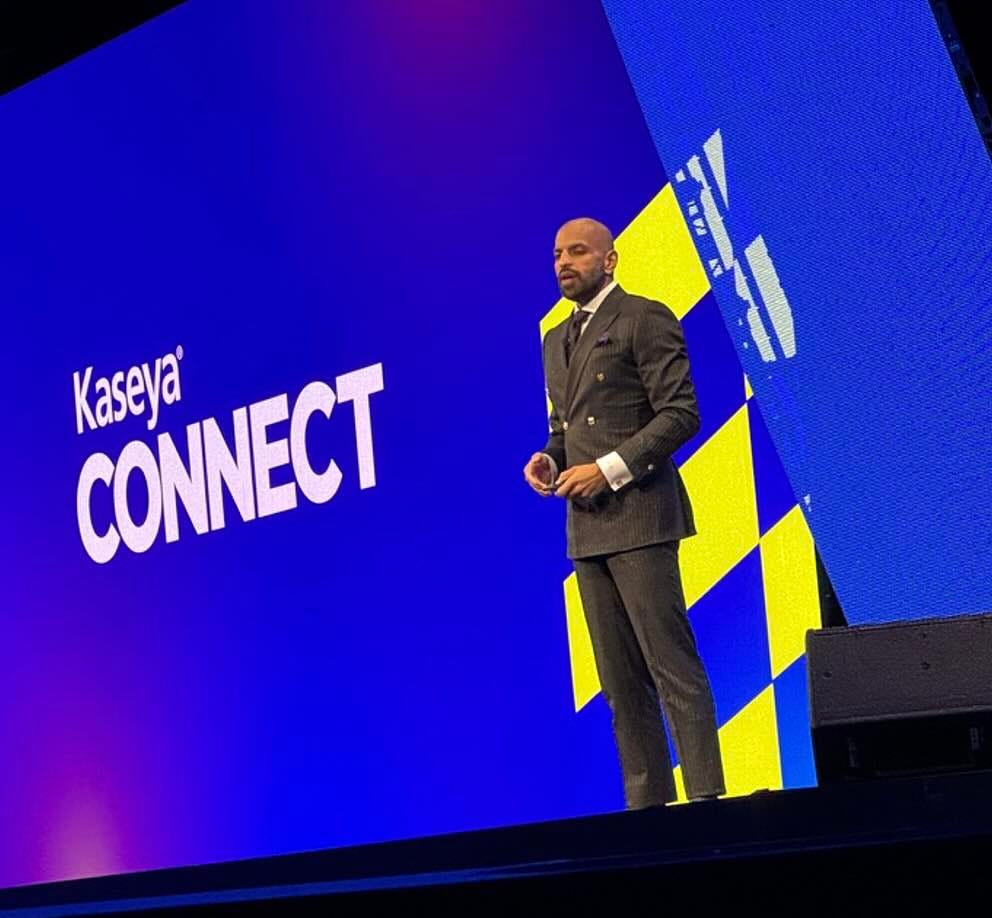Bonus Post: A Tale of Two SIEMs
Why Kaseya and Huntress unveiled managed SIEM products on the same day, Kaseya’s great taste/less filling platform strategy, and more from this year’s Kaseya Connect event.
As I said in my last post, one of anything is a fluke, two is a coincidence, and three is a trend. I’m going to bend those rules just a bit and call the fact that both Kaseya and Huntress launched fully managed SIEM solutions for MSPs on the same day last week a coincidence that’s indicative of a trend.
The trend in question is that cyber insurers who probably struggled to spell SIEM two years ago are increasingly including it among their mandatory security protections.
“I think soon it will be more of a requirement than a nice to have,” said Huntress CTO and co-founder Chris Bisnett last week during a conversation at the RSAC Conference in San Francisco. Many MSPs agree, he continues. Others have long been seeking a SIEM solution for separate reasons, according to recently named Kaseya chief product officer Jim Lippie.
“The average MSP has 40+ products and dozens of vendors they need to manage,” he says. “They don’t have the time to properly configure a lot of their security tools, which means that they’re getting inundated with noise, alerts from all over the place.”
A well-engineered SIEM solution can fix that problem, but products from enterprise-oriented vendors like IBM and Cisco’s Splunk unit tend to be more complicated and expensive than MSPs can handle. Outside a handful of products like ConnectWise SIEM, however, offerings built specifically for managed service providers with SMB clients have been scarce.
Enter Kaseya SIEM and Huntress Managed SIEM, both of which are fully or mostly outsourced solutions suitable for MSPs without a SOC in house or an analyst on staff. Both are predictably priced, moreover, in contrast to services that charge based on events logged, gigabytes ingested, and other variables difficult for an MSP and their clients to forecast.
“That immediately makes SIEM very hard to sell, because you don’t know how much to tell them it’s going to cost,” Bisnett (pictured) observes.
Huntress’s answer to that problem is to base its SIEM pricing on how many data sources, like devices and applications, you have. Few MSPs know how many gigs of log data they generate in a given month, Bisnett notes. “How many endpoints do you manage? How many firewalls do you manage? They can tell you those numbers.”
Kaseya’s offering (perhaps unsurprisingly given the precedent set by the company’s biggest recent launches) is even more simply and disruptively priced. For the moment, during an early adopter period limited to 500 MSPs running both Kaseya 365 Endpoint Pro and Kaseya 365 User, subscribers pay just $1 per user per month.
That’s not a randomly selected number, according to Mike Puglia, general manager of Kaseya’s security suite. Crunch enough numbers, he suggested during a recent interview on MSP Chat, the podcast I co-host, and it’s not hard to estimate how much SOC capacity a given MSP will consume. Say, for example, you’re managing 100 end users.
“Why do I have to make it complicated? You probably have about a hundred computers. You probably have a handful of firewalls,” Puglia notes. Factoring in how much data a computer or firewall or other data source typically produces and some other figures left Kaseya fairly confident it could charge a flat buck a user a month and still turn a profit.
“Will it go up from there? Probably, but I don’t anticipate some massive change,” Puglia says. The current 500-MSP trial run is designed to test Kaseya’s estimates against real-world results. But unless the company got its math way wrong, any price bump enacted when the solution enters general availability in Q3 is likely to be modest.
Integration without compromise
As we’ve noted before, you’re pretty much nowhere in the world of managed services software these days without a platform.
In fact, if you’re a regular Channelholic reader you may be tired of how regularly I contrast vendors like Kaseya that prioritize depth of integration over best of breed functionality and vendors like ConnectWise that prioritize best of breed functionality from an ecosystem of vendors over depth of integration.
Well, it turns out Lippie (pictured) is tired of hearing that too, so much so that one of the earliest moves he’s made since stepping into his new role last month is to set Kaseya on a course toward freeing partners from choosing one option or the other.
“What our goal going forward is going to be is that you have best of breed products inside a cohesive platform,” he says. “No more debate, no more choices to make. You get the best of both.”
MSPs will get to define the best in best of breed too, Lippie adds. Kaseya will soon begin sending surveys out to its partners asking them to rate every Kaseya product they use and specify one change that would make each one better.
“We’re going to start creating a quarterly report card for us internally so we can see where we’re at with each product, and then measure the improvement over time,” Lippie says. The result, he predicts, will be an integration-without-compromise end state resulting in the Miller Lite of managed services platforms.
A few final odds and ends
It’s just about time to leave Kaseya Connect 2025 behind, but before I do, here are a few last things I learned about Kaseya during the show:
1. It still wants your love. The big news out of last year’s Connect was the launch of the first Kaseya 365 SKU, subsequently renamed Kaseya 365 Endpoint. I was more struck at the time, though, by Kaseya’s seriousness about earning the loyalty and affection of partners unhappy with its sales tactics and billing issues.
A year later, it appears, Kaseya’s still determined to turn critics into fans, this time through steps like terminating “high watermark pricing,” a licensing policy that raised the contracted minimum seat count on a given product when partners added users but didn’t lower it when the same partner dropped users.
“We feel that’s been punitive,” Lippie says, noting that under the new rules, an MSP who loses a customer, say, can go all the way back to their original contracted minimum whenever they wish.
Other moves aimed at boosting partner sat announced during Connect include an end to system upgrades during business hours, the introduction of a consolidated platform-wide release calendar, and the gradual elimination of maintenance windows.
“We don’t want to take a product down on Saturday while you’re trying to get something done,” said Gray Knowlton, Kaseya’s EVP of R&D, during a general session presentation.
2. They have a whole lot of money at their disposal. Enough, for instance, to give away up to three Datto BDR appliances of any kind or capacity per customer for free, and to invest $250 million on backend infrastructure upgrades.
“We just re-platformed a big chunk of our storage backend for our backup products,” Knowlton said by way of example. “Now the products are much faster and much more reliable.”
3. It has no imminent plans to go agentic. Atera is nearing the GA launch of its Autopilot agentic AI feature, which unlike most AI-based automation tools for MSPs is designed to triage, diagnose, resolve, and close tickets 100% autonomously in most cases. Kaseya, by contrast, still wants a human somewhere in the loop for now.
“It’s exciting to talk about agentic AI and it’s exciting to want to launch something in the market,” says Nadir Merchant (pictured), CTO and general manager of Kaseya’s IT operations suite. “The reality is the environment that we deal with for our customers is very high risk, and it needs to be perfect or close to perfect in order to unleash something like agentic AI.”
Kaseya’s Cooper Bots, therefore, require some technician programming and oversight. But make no mistake, Merchant says, Cooper Agents are coming, and Kaseya partners should be preparing themselves for that day now.
“AI is going to revolutionize technology, and therefore as technology businesses it’s incumbent on organizations to be neck deep in this stuff,” he says. “If they’re too cautious about it and they’re too worried about it, they might not educate themselves to the level necessary to really be in a position to utilize it when they need to.”
4. It’s practicing management by consensus. Ordinarily, CEOs select their CxOs. Just ask first-year CEO Manny Rivello at ConnectWise, for example. Yet Lippie was recently named chief product officer by … no one exactly, as Kaseya has yet to select a successor to former CEO Fred Voccola. The company’s clearly making strategic org chart, product, and pricing decisions anyway, though, so who’s calling the shots?
Everyone, according to Lippie. “We have a very capable executive leadership team at Kaseya with a private equity sponsor that is one of the most successful software investors on the planet,” he says, adding that there are more than enough ideas for advancing the company’s strategy on the table. “We collectively come together to identify which ones we’re going to tackle first and build execution plans around them.”
None of that, he continues, absolutely requires having a CEO. “Obviously, it’s very valuable and it’s going to be great once we land our next one, but we’re quite comfortable making a lot of these strategic decisions right now based on the current team in place.”






